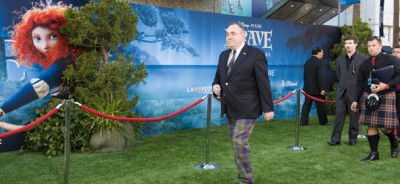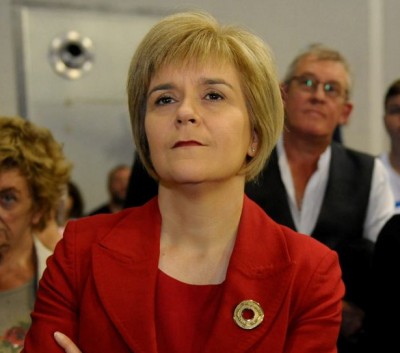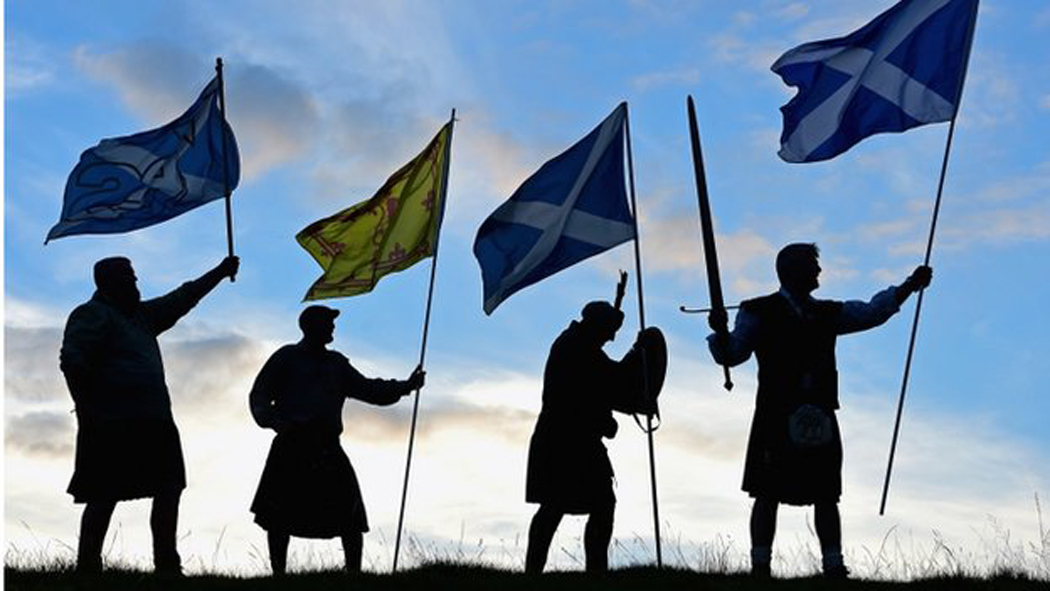During the Scottish referendum only partial and very discreet hints were made to the distinct Scottish identity. Why was that?
September 2014 Scotland voted for or against independence. But why? Judging by the official white-books and the passionate debates, the question circled around the economic advantages of either an AYE or a NAE plus the general feeling that even a socialist government in Westminster would never deliver enough of that welfare, which in the best of worlds would be a reflection of the wealth of the Scottish Nation (read: the oil). But why wish to create a new (old) nation if it was only about economic advantage and the right mixture of equality? Is there no more to be an independent nation in the 21st century?
The answer is of course affirmative. To build a nation demands much more: at least some sense of common history and some national icons. The odd feature of the debates from the last three years – and especially the last few months before the referendum – was nevertheless the marked absence of a reference to what we all (as seen from abroad) know Scotland is about: misty landscapes, heather, haggis, kilts and tartans as well as emotional events like the battles at Bannockburn and Culloden plus the massacre in Glencoe; not to mention the national heroes: Robert the Bruce, William Wallace and – perhaps – Mary, Queen of Scots; and finally of course The Declaration of Arbroath.

The question asked here is why all this paraphernalia played such a minor role in the debates leading up to the referendum? Why did Salmond & Co keep so remarkably quiet? And why more specifically did a number of Scottish institutions generally endowed with managing ‘Scotland the Brand’ succeed in keeping silent – for instance The National Trust for Scotland, Historic Scotland, Visit Scotland, The Scottish Football Association and The Standing Council of Scottish Chiefs? (Which have all more or less claimed they did not wish to air an official standpoint).
One reason was of course the choice made early on by the man behind it all. Alex Salmond grew up in a party generally filled with a bunch of mottled “tossers”: Tartan Tories, ultra-nationalists of a slightly violent ilk plus military reenactors of all sorts. Salmond’s chief victory was to shift these people aside and turn SNP into a respectable left-leaning party able to compete with Labour. No way was he or his co-workers going to jeopardize this platform by letting Braveheart back into the inner circle. They probably also understood that if Scottish people were only fitted with hearts, they would all by themselves be inspired by the Scottish Dream and vote yes to independence; but that the realities might (as it did in the end) keep them from delivering in the ballot box. The arguments voiced were thus focusing on “A Better Future” and not “A Glorious Past”. A powerful signal of this was the decision to give the vote to “the future generations” (the 16+).
Another reason might of course also be that Alex Salmond as a trained historian knew very well that Scottish History and Scottish Culture are murky affairs. Nothing there is straight forward; (it seldom is in real history). Thus he would know that William Wallace was as violent as they get; that Bannockburn was not the ultimate victory; that the Jacobite rebellion led to a civil war and that Culloden was fought between opposing Scottish armies (one led by the English); and that the tartan tradition as we know of it today was a romantic invention of tradition from the beginning of the 19th century.

As it is, “Scottish Culture” is foremost the result of an invention of tradition. Of course the different “elements” as listed above have different pedigrees, more or less ancient; however coalescing into a total Scottish Package they come in the form of a tourism brochure filled with breath taking photos and clinging superlatives. In short: a valuable myth worth an amazing amount of money; (in 2013 Scottish tourism generated 3/4 of the income from the Oil Extraction in 2011; and employed perhaps more than 8 times as many people.)
One danger, then, of demystifying the different elements of this package (as listed above) might simply be to end up causing real harm to the tourism business of Scotland in a situation, where most people would agree that the referendum was causing a global media frenzy akin to what we have come to expect from major events like the Olympics. Why debunk a success? Another harm may come from the fact that the main tourism income is generated by day-visitors from South of the Border going for a short break amongst the Barbarians up North? Featyring future complications might in fact have ended up being a decisive argument for keeping the Union. Hence the tourism business was carefully excluded from the debates, while the income from oil was launched as the economic life-belt of an independent Scotland.
Finally a consequence might also be the fear of a real “civil war”. Fiddling with the home-grown, kailyard, identity of people in the midst of a nerve-racking referendum by inviting the opposition to tell how it is all but a figment of their mind, might also cause serious harm. Which is something any politician (respectable or not) would try to avoid, facing the real challenge of making Scotland work after the referendum – whichever way it went
Here, however, we are in the business of medieval nature, history and heritage. Hence we have tried to give some inroads to both new and old publications presenting some of the different icons of Scotland and their cultural history. Beware though: the intention is not to present readers with a fully rounded presentation of the history of distinct Scottish periods, events or people. Rather it is to furnish our readers with inroads into a better understanding of what Scotland the Brand is all about!
Please follow the links below
Names, Sprigs, Feathers, Tartans and Kilts
SOURCES:
2011 Report on the Scottish Energy Sector
The Alex Salmond Story
By Brian Wheeler, BBC
READ MORE:
 Understanding Scotland. The Sociology of a Nation.
Understanding Scotland. The Sociology of a Nation.
By David MacCrone
Routledge 2001 (2. edition)
Scotland – The Brand: The Making of Scottish Heritage
by David McCrone
Edinburgh University Press 1995
ISBN-10: 0748606157
ISBN-13: 978-0748606153
